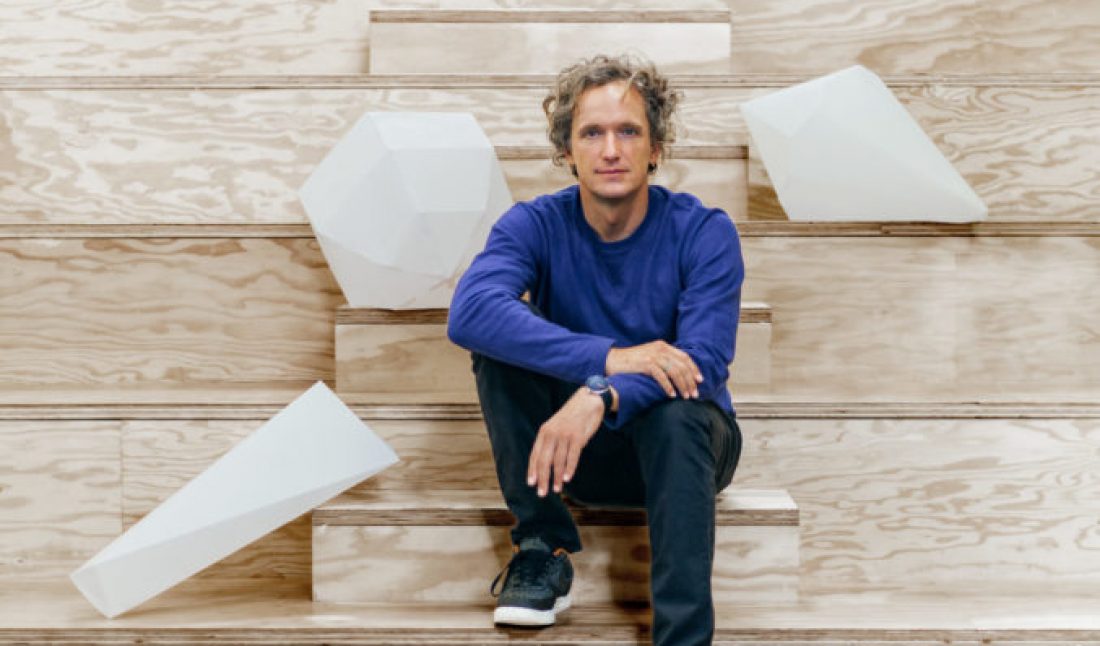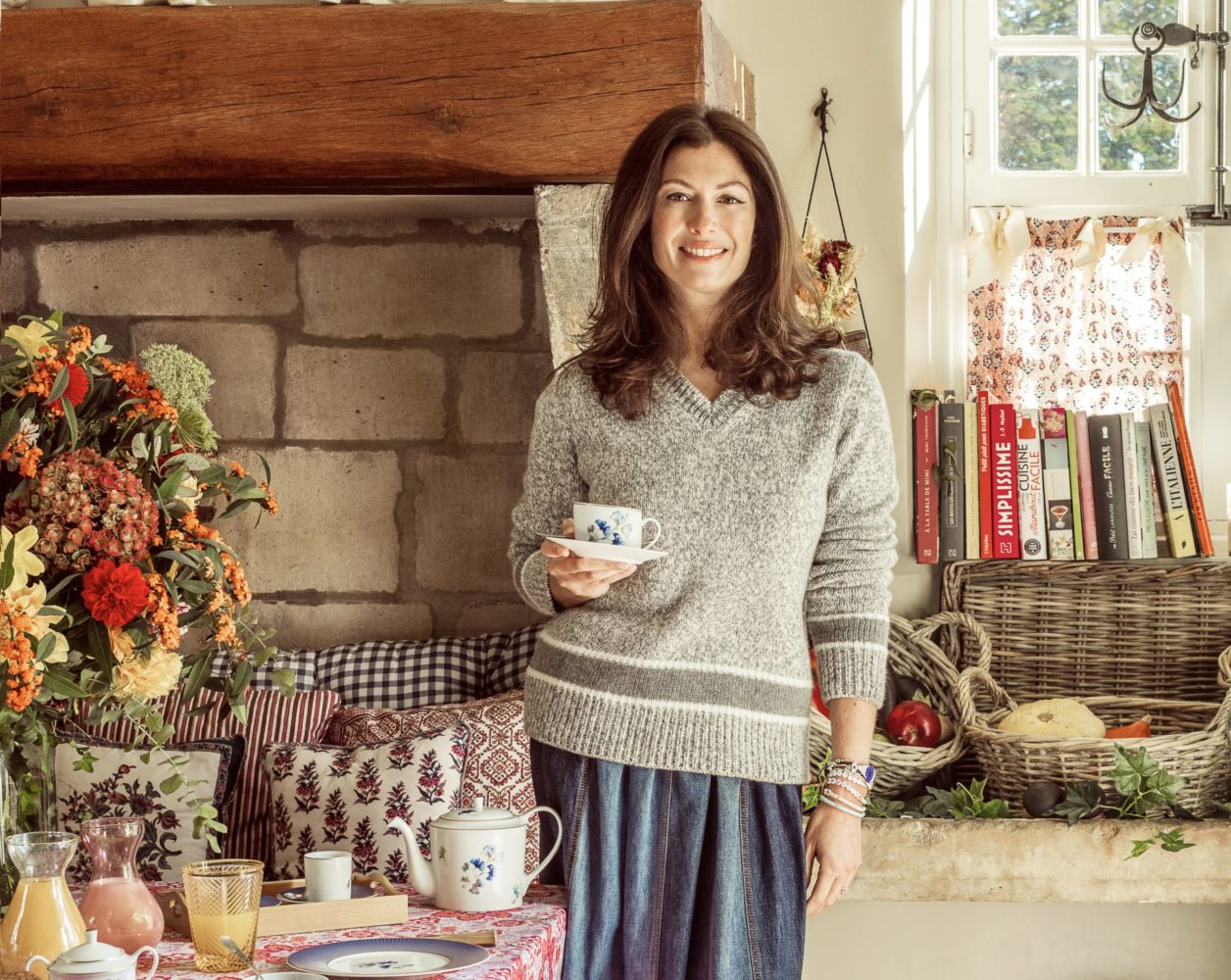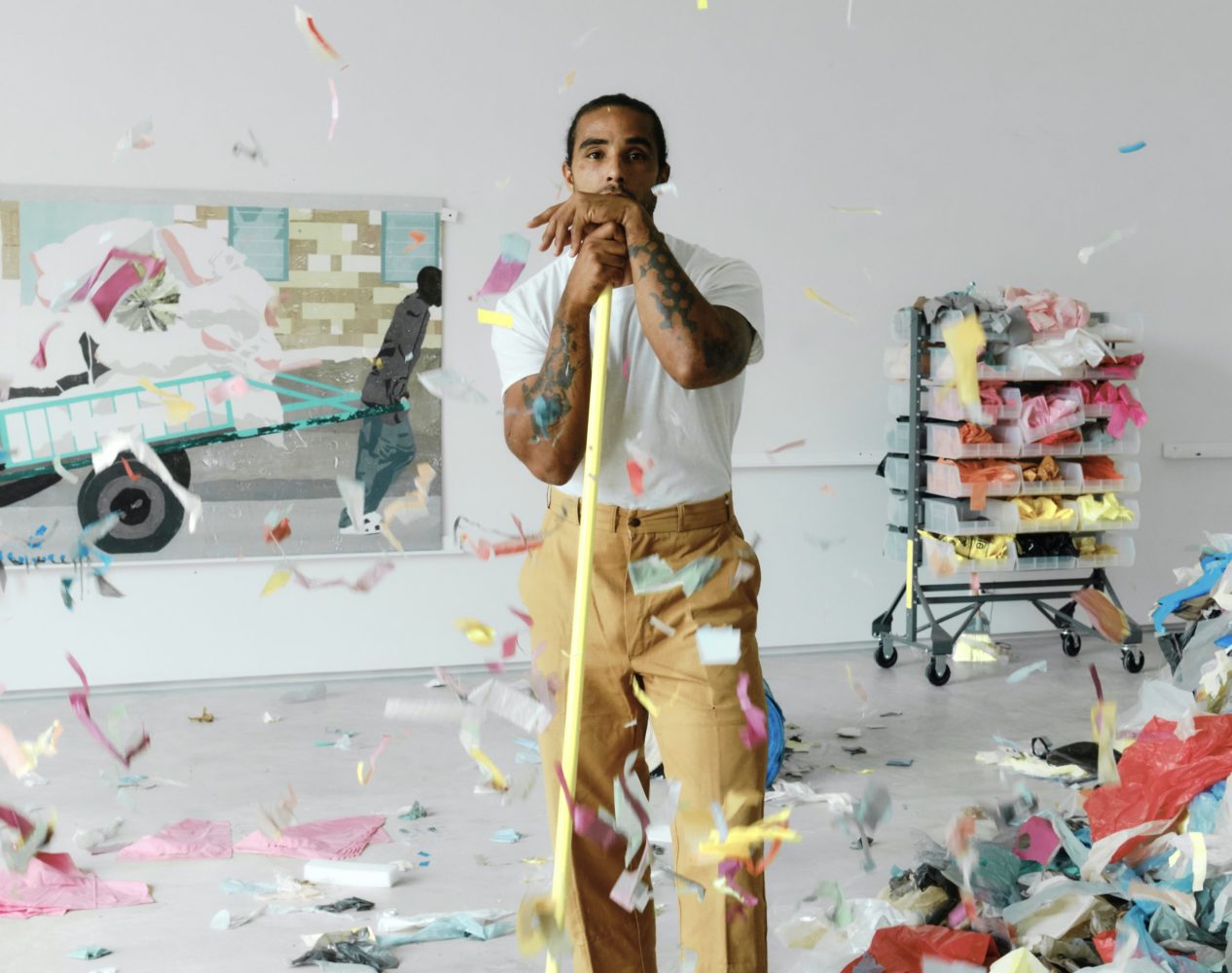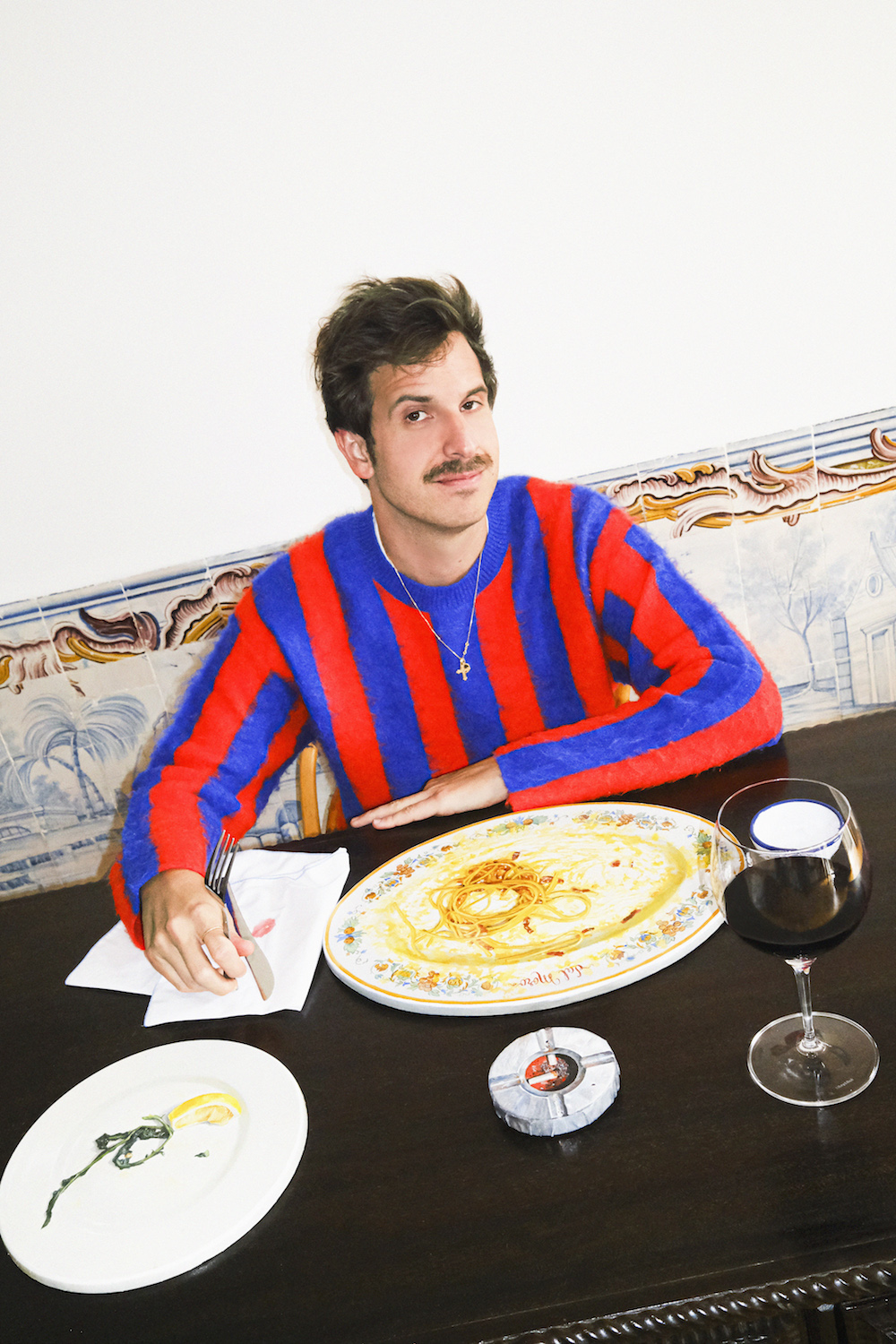In just the past year, Yves Béhar has launched the developmental smartbot Moxie, the Yale Linus Smart Lock, the Unagi scooter, and the Vodafone/Disney Neo smartwatch. His design studio fuseproject also created COVID-19 health messaging for the UN/WHO, a VOX Ventilator, a design for the underwater research station Proteus, and a collection of sunglasses made from 100 percent ocean plastics. Not only is that a lot for one year—it’s been one heck of a year. But as Béhar told Whitewall via Zoom in the spring, “I don’t know a different way to get through hard times other than being involved, contributing, working.”
Béhar, with fuseproject, which he founded 20 years ago, has been behind such well-known design projects as One Laptop Per Child, Jawbone wireless speakers, and the Snoo. In a new monograph published this year by Thames & Hudson, the designer writes about how he’s used technology as a tool in design, focusing on human values, which he believes can make an object truly delightful.
Embracing the possibility of advanced tech and robotics to help serve the most needy in our society, Béhar believes that designers are uniquely suited to address the challenges of climate change. He spoke with us about why empathy as the key to design.
WHITEWALL: You have said that designers are uniquely positioned to address climate change, and that the inequalities it creates are design problems. How do you see this as design’s chance to exist almost as a higher calling?
YVES BÉHAR: I learned a while back that 80 percent of sustainability decisions for a product or service are made during the design phase and the conception phase. This is when designers are present. We are present, we are in the room, we have a role to play, especially in the early stages of a product or service. It’s clear to me that, whether they are on-the-fy small adjustments that you can suggest or much bigger strategic options in terms of materials, distribution, and manufacturing, we can suggest those.
At the end of the day, it’s what consumers want. So the companies that will be transforming themselves for the era of sustainability will really be the leaders of their field. It’s a not-to-be missed opportunity both for designers and for businesses to remake themselves and lead in that transformation.
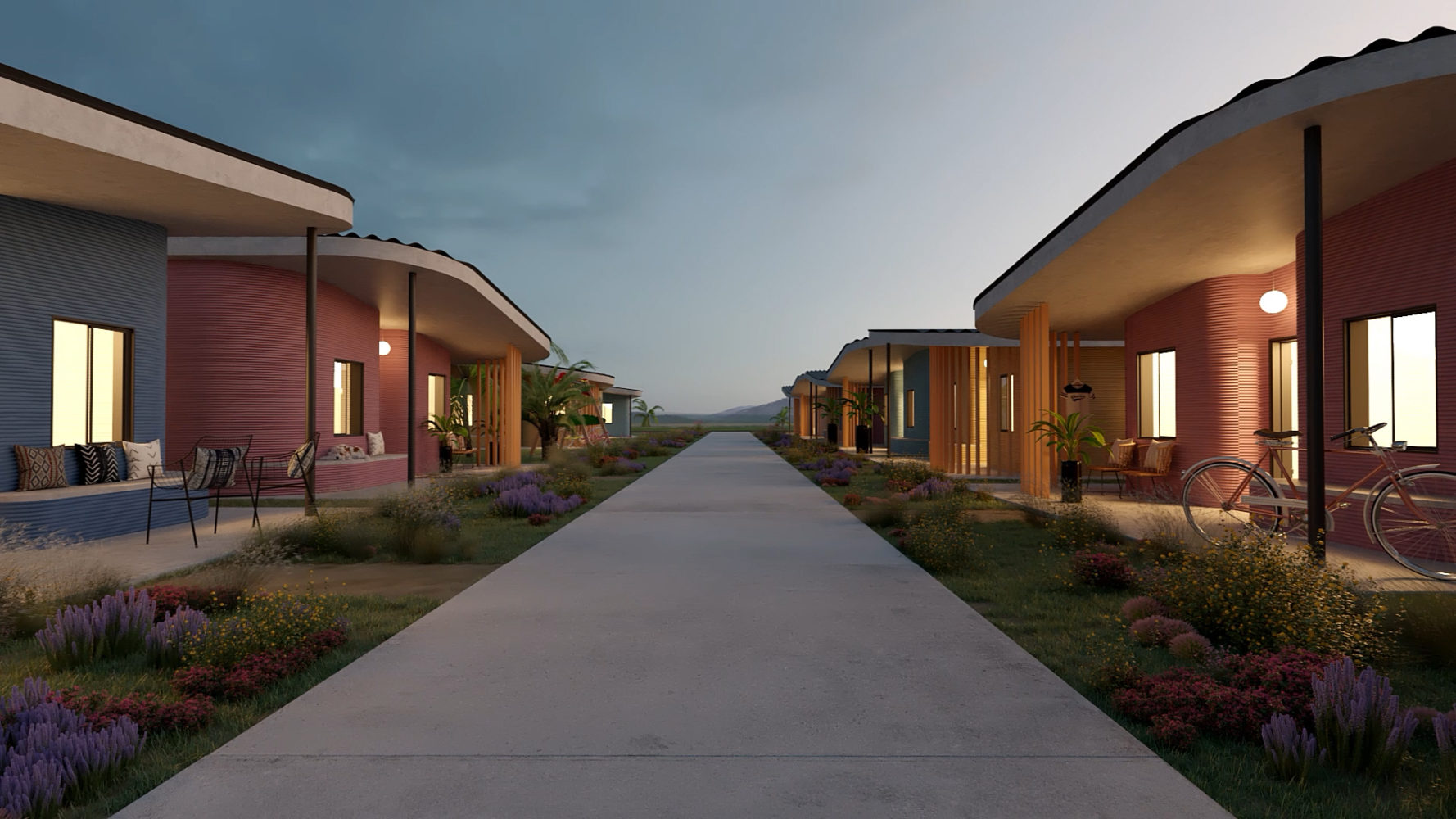 Fuseproject has partnered with New Story Charity to create a 3-D printed community.
Fuseproject has partnered with New Story Charity to create a 3-D printed community.
WW: Like your recent sunglasses collection with Boyan Slat’s Ocean Cleanup of the Great Pacific Garbage patch, which has been incredibly popular. What attracted you to that project and how do you see that growing?
YB: I’ve been fascinated by the Ocean Cleanup work since the beginning. I had a chance to meet with Boyan Slat two years ago in San Francisco. And we talked about once all that material is collected, what gets done with it? The agenda initially in that discussion was about demonstrating that this material that we consider trash is actually functional, beautiful; it has properties that are unique. It raises funds and creates a circular economy around the ocean cleanup, meaning you collect materials from the oceans, you turn these materials into a product people want, and that will last and that people will keep, and the funding that you receive from that allows you to get more materials out of the ocean.
Each pair cleans 24 football fields, in terms of the money raised for it, and today we have raised enough to clean 250,000 football fields out of the Great Pacific Garbage Patch. That is about half of the surface of the garbage patch. You can see how this is a completely new way, a circular way, to really effect change.
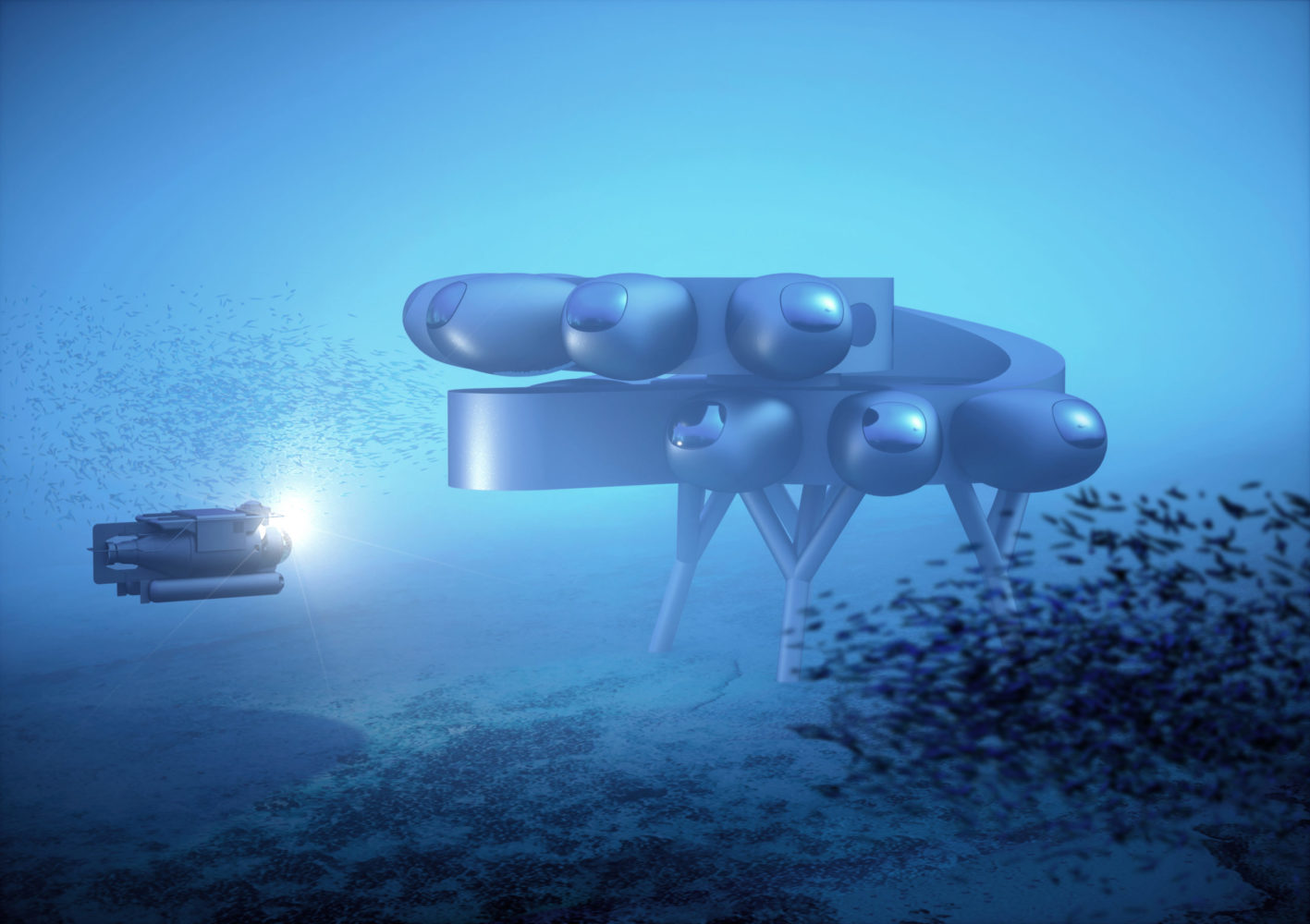 PROTEUSTM, a project with Fabien Cousteau Ocean Learning Center (FCOLC), courtesy of fuseproject.
PROTEUSTM, a project with Fabien Cousteau Ocean Learning Center (FCOLC), courtesy of fuseproject.
WW: Is that a model that can be used elsewhere?
YB: I’m certainly hoping we can use this model in other industries for other remedial efforts, as well as for new efforts that make sure that plastic materials don’t end up in the ocean in the first place. That means changing certain industries, moving certain industries away from plastics, and into materials that actually have a positive impact on the earth, rather than a negative impact.
WW: Thinking about the ocean, you’ve designed the Fabien Cousteau Ocean Learning Center, Proteus. Through this research space, how do you believe you can change people’s minds and understanding of our oceans by spending time under water?
YB: Proteus is Fabien Cousteau’s vision for the equivalence of the International Space Station, but to accelerate underwater research. We’ve only explored five percent of our oceans. Ninety-five percent we’ve yet to understand and learn about. What Fabien and I discussed very early on was that we needed two things: First, we needed this scientific environment that is comfortable and livable, that scientists and universities and government organizations want to spend time in and contribute to.
We also wanted to create something exciting, something that would trigger the imagination. We all dream of being underwater—we’ve read Jules Verne, we’ve seen Jacques-Yves Cousteau documentaries. There’s a human desire and longstanding imagination around the oceans. But there’s nothing to captivate us. So we wanted Proteus to be that captivating structure, that iconic destination. And with the tools of today, schools and universities and students will be able to virtually visit Proteus underwater to speak directly to Fabien or some of the scientists about some of the progress being made.
We designed Proteus to speak to a sense of the future and to create excitement about our developing more knowledge about the oceans. The structure itself is very expressive; it’s an architecture of two volumes that are offset from each other that are on top of each other with pods, which are added on over time. Similar to the International Space Station, there is a need underwater to add new equipment, to conduct new experiments, to create new scientific labs. The pods allow for that expansion and for the entire unit to adapt over time to the changing needs of that research.
WW: In the conversation around climate change, the human impact often gets lost. This is impacting us, not just the natural environment, and it’s impacting our most vulnerable. How do you as a designer change that conversation?
YB: Rather than technology benefitting the exploitation of our own preferences, media, shopping, and habits, I feel like technology will fulfill its promise when it addresses the needs of people who need it the most. Not the comfortable middle part of life, but, rather, the people who are aging, people who have learning difficulties, people who have health issues. Technology is really good at delivering on certain tasks if it’s designed right.
The Happiest Baby Snoo, the technology in it is really focused on the baby. The technique to put the baby back to sleep is not that complex, but when the whole thing is pulled together, compared to a general-purpose device, some gadget that needs to follow you around and cook our meals (which I don’t think we really need), this makes a true difference in people’s lives. Design is about intent. As designers, let’s work with that clear intent, let’s apply the best of technology, and the best of AI, the best of robotics, to fulfll a promise that we can take care of all of humanity—not just people who are fortunate like us, not just the healthy in society.
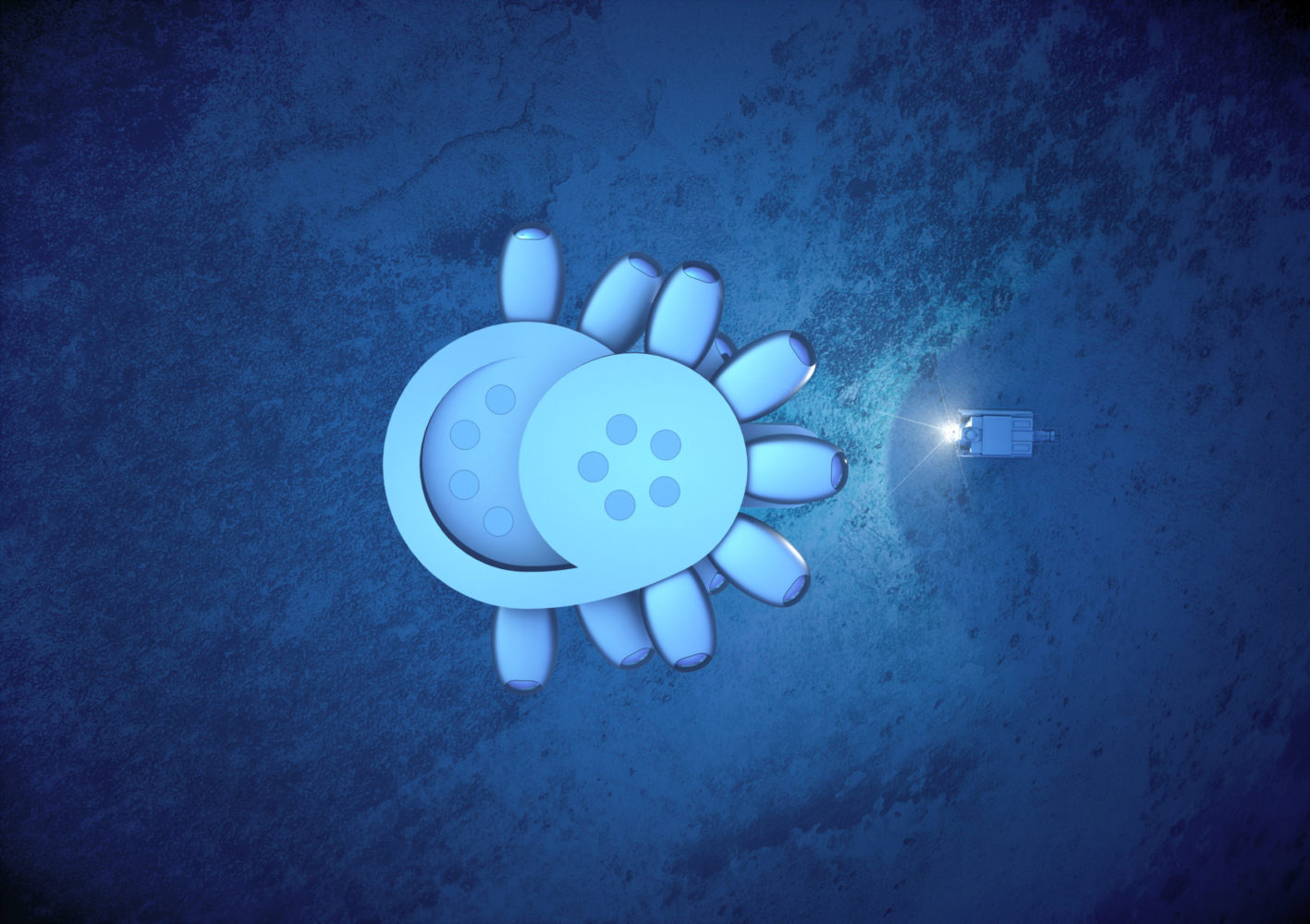 PROTEUSTM, a project with Fabien Cousteau Ocean Learning Center (FCOLC), courtesy of fuseproject.
PROTEUSTM, a project with Fabien Cousteau Ocean Learning Center (FCOLC), courtesy of fuseproject.
WW: For the Snoo, personally, I have to say thank you. It was an actual lifesaver in terms of sleep, mental health, peace of mind, and safety for me with my newborn.
YB: That’s so amazing to hear. Working on the Snoo for six years, building the function, building the systems and technology and the design, eventually production and the service around it, is truly a shot in the dark in some ways. You’re using the best possible knowledge that Dr. Harvey Karp, I, and others on the team had, but you don’t know if people are going to love it. You don’t know how much acceptance a completely new solution like this will garner. And when that acceptance is so complete as it has been with the Snoo, both in terms of the medical profession, hospitals, as well as consumers, its truly it’s the best reward you can have as a designer.
I don’t know if you heard, the FDA has designated Snoo as a breakthrough device with a potential to prevent Sudden Infant Death Syndrome (SIDS). We built Snoo for safety, to keep baby on its back, but after 200 million hours of babies in the Snoo, it’s clear that we have in good part solved that problem for babies. I think it’s an extraordinary outcome, and we were very humbled throughout.
This is where the great promise of technology gets fulfilled. It’s when it becomes a true partner to life’s challenges for people, rather than a nice to have a piece of entertainment around us.
WW: In your new book, you talk about not fearing robotics, and that if we can imbue humanity and empathy, they can work for us and be quite delightful. Which makes me think of your project Moxie, a developmental smartbot companion designed for Embodied.
YB: We worked with this company Embodied on the Moxie robot. The Moxie robot specifically addresses the needs of kids on the spectrum, for autistic children, and so his physical characteristics—the big eyes, the hand movement—is really what creates that connection, keeps a child’s attention, and teaches over time empathy and the ways to connect with other children and adults. It looks like it’s useful really for all children, because especially in this age of COVID where there is so much isolation, every child benefits from connecting.
Moxie is not trying to be palliative to human contact; it is just reinforcement of it. Moxie will function for an hour a day, and then say, “Okay, let’s start again tomorrow, let’s learn some new things, let’s play together again tomorrow.” For parents with children that have these learning needs, that’s the type of product that they really need in their homes.
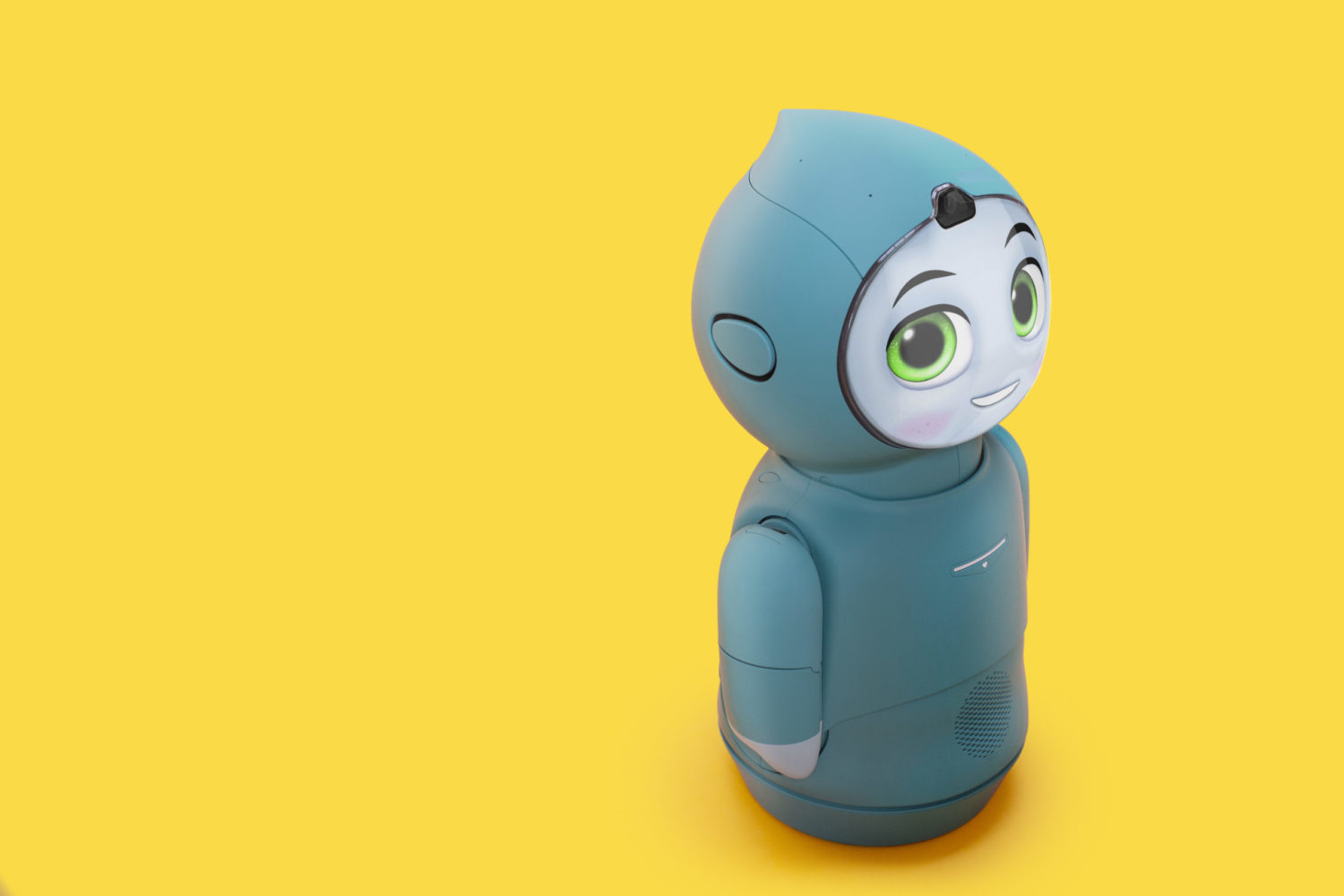 Moxie for Embodied, courtesy of fuseproject.
Moxie for Embodied, courtesy of fuseproject.
WW: How much human behavior do you see actually changing for the long term as a result of the pandemic?
YB: There certainly have been silver linings from the pandemic. It’s been a catastrophe and it’s been very difficult for most people, but some trends have emerged that I think are positive trends. For example, the fact that there is this sense of trust that has evolved for employers and employees where the office isn’t the place where you punch in and punch out. Offering flexibility is important for individuals and families, and it provides more options. It means a hybrid model, and that level of trust and humanity is positive progress.
I see telemedicine, for example, as a really positive change as it makes regular check-ins and doctors visits more affordable and easier to do for most people. And in some ways the pandemic also gave us a clear view of environmental change. When there were no planes in the sky and no cars on the road, it was clear the effect of our activity. If you can see it, you believe it. I do think that is positive in terms of this awareness of moving forward with low carbon future.
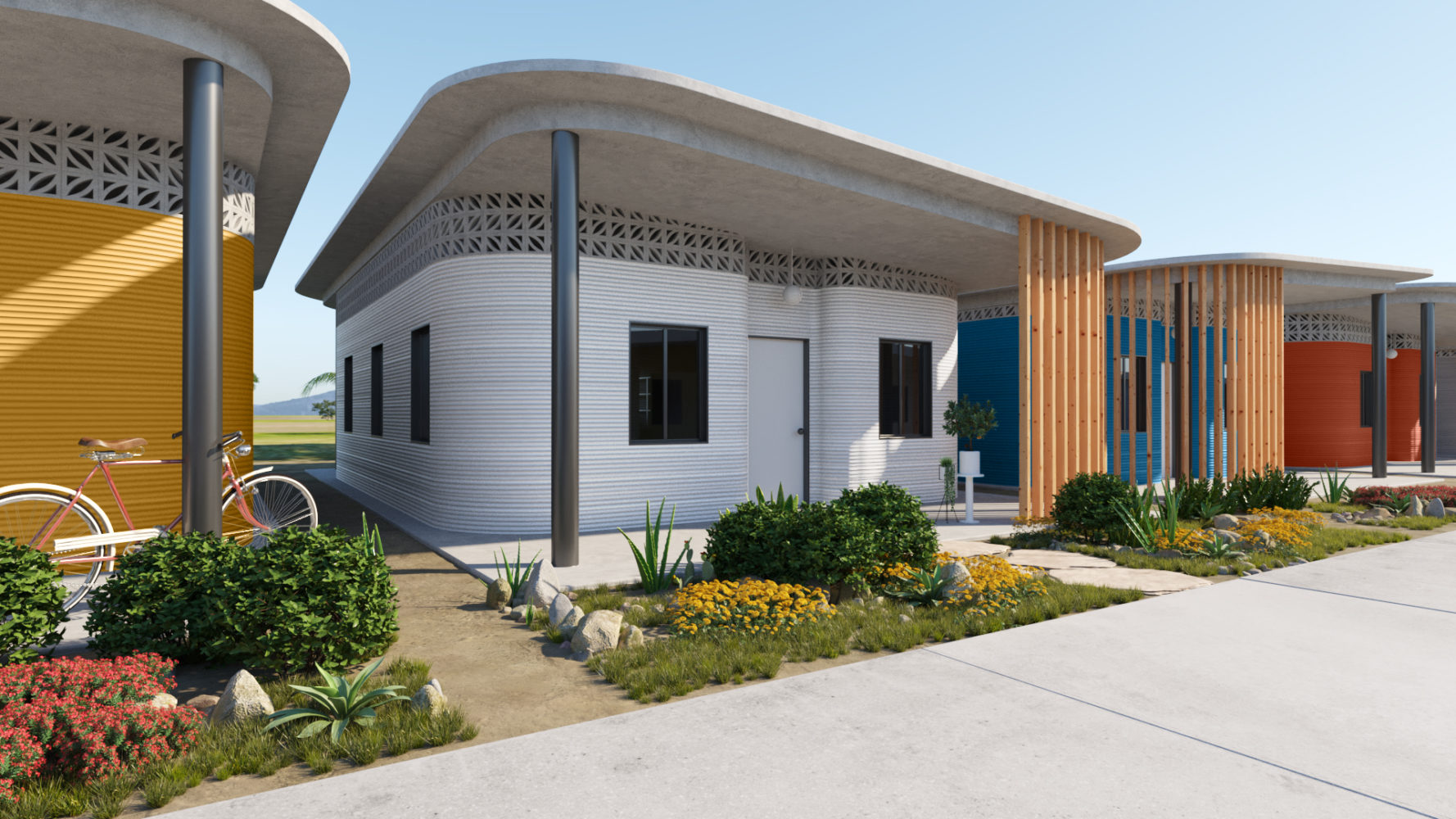 Fuseproject has partnered with New Story Charity to create a 3-D printed community.
Fuseproject has partnered with New Story Charity to create a 3-D printed community.






